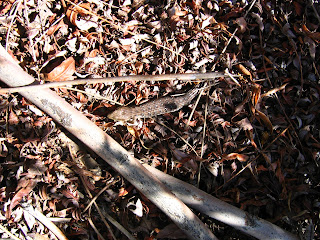We are not listing insects, or spiders. We love them too, but there are just too many.
Plants(2025 update)
Eschscholzia californica, California poppy
Rumex sp?
Oenothera elata, Hooker's Evening Primrose
Epilobium canum - California fuchsia
Cliff Spurge, Euphorbia misera
Fuchsia-flowered Gooseberry, Ribes speciosum
White Sage, Salvia apiana
Black Sage, Salvia mellifera
California Buckwheat, Eriogonum fasciculatum
Dune Buckwheat, Eriogonum parvifolium
Bush Rue, Cneoridium dumosum
Arroyo Willow, Salix lasiolepis
Western Jimson Weed, Datura wrightii
California Gilia, Gilia achilleifolia
Blue-eyed Grass, Sisyrinchium bellum
Blue Dicks, Dichelostemma pulchellum var. pulchellum
Red skinned onion, Allium haematochiton S. Watson
Miniature Lupine, Lupinus bicolor
Arroyo Lupine, Lupinus succulentus
Asteracea;
Western Marsh Cudweed, Gnaphalium palustre
Coyote Brush, Baccharis pilularis
California Sagebrush, Artemisia californica
Bush sunflower, Encelia californica
San Diego Sunflower, Bahiopsis laciniata
Coast Goldenbush, Isocoma menziesii (Hook. & Arn.) G. Nesom var. vernonioides
(Nutt.) G. Nesom AKA Palmer's Goldenbush, Ericameria palmeri
Grasses: Poaceae
Purple Needle Grass, Nassella pulchra (Stipa pulchra) official state grass since 2004
Birds
Western Bluebird, Sialia mexicana (Jan. 25, 2017)
Dark-eyed Junco, Junco hyemalis (Jan. 25, 2017)
Loggerhead Shrike, Lanius ludovicianus (Dec. 2016)
Hooded Oriole, Icterus cucullatus (March 16, 2016)
Cedar Waxwing, Bombycilla cedrorum
Yellow-rumped Warbler, Dendroica coronata
Yellow Warbler, Dendroica petechia
Black-throated-Gray Warbler, Dendroica nigrescens
Sharp-shinned Hawk, Accipiter striatus
Mourning Dove, Zenaida macroura
Allen's Hummingbird, Selasphorus sasin (nested)
Anna's Hummingbird, Calypte anna (nested)
Downy Woodpecker,
Dryobates pubescens (male, female and immature)
American Crow, Corvus brachyhynchus
Lesser Goldfinch, Carduelis psaltria
American Goldfinch, Carduelis tristis
Bushtit, Psaltriparus minimus
Wrentit, Chamaea fasciata
Northern Mockingbird, Mimus polyglottos
Black Phoebe, Sayornis nigricans
Rufous-crowned Sparrow, Aimophila ruficeps
White-crowned Sparrow, Zonotrichia leucophyrs
House Finch, Carpodacus mexicanus
House Sparrow, Passer domesticus (Non-native)
European Starling, Sternux vulgarus (Non-native)
Reptiles, and amphibians
California Slender Salamander, Batrachoceps attenuatus (Breeding)
Southern Alligator Lizard, Elgaria multicarinata (Breeding)
Western Fence Lizard, Sceloporus occidentalis (Breeding)
California King Snake, Lampropeltis getula californiae



































